These red-headed Chrysomela leaf beetles were all over the park near my home this week, mostly in the vicinity of a large willow tree, the beetles’ food of choice. Chrysomela texana are close relatives of the cottonwood leaf beetle (Chrysomela scripta). C. texana can be easily distinguished by it’s red pronotum, head, and underside (most similar species have distinct black markings on these areas). Every life stage of the beetle was apparent, from the yellow eggs laid in clusters on a leaf, to the lady beetle-like black and brown larvae, skeletonizing the surrounding vegetation in gregarious clusters, the red-brown pupae.
(Note: The egg hunt was successful. Happy Easter!)
Like swallowtail caterpillars, the larvae have cool, eversible glands which they use to secrete defensive chemicals (as pictured by Mike Quinn on BugGuide). The pupae of these beetles were particularly abundant. They seemed to be stuck to every surface I looked at–tucked under bark, into crevices, dangling from leaves and even from small flowers and weeds. This gave me the chance to snap the pictures below of a beetle struggling out of its pupal case. I even took a few home, but they were sneaky and eclosed on me when I wasn’t looking.
*edit*
Surprise bonus image! Now the life cycle is complete. 😉


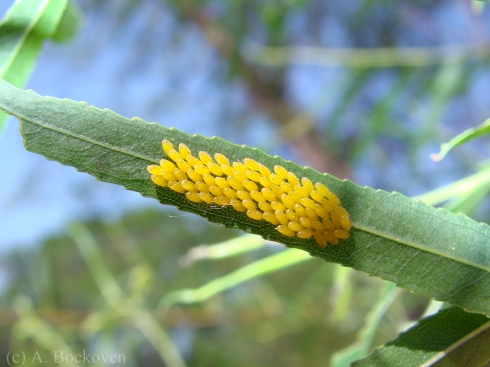

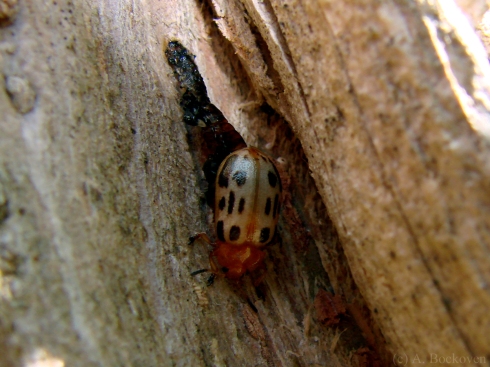
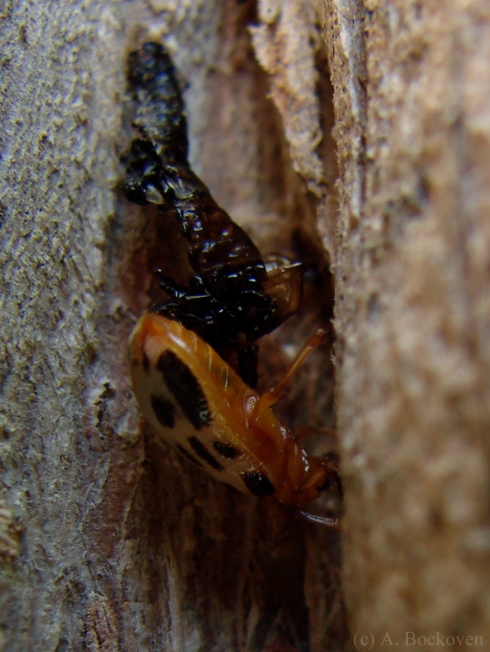
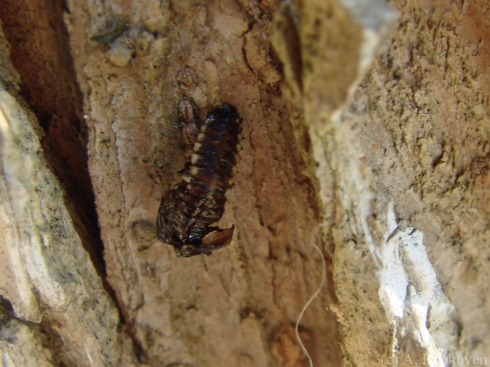
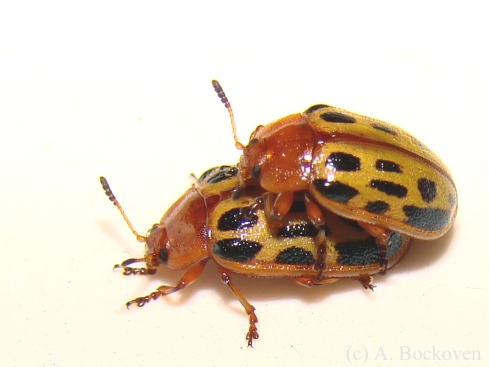


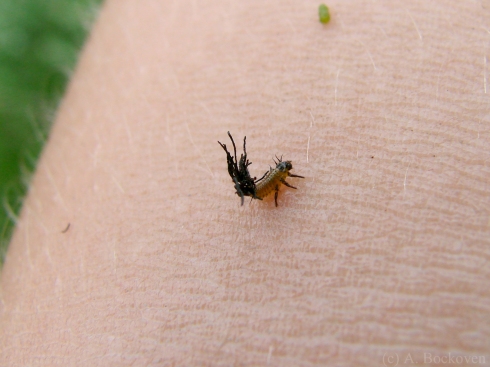

Recent Comments